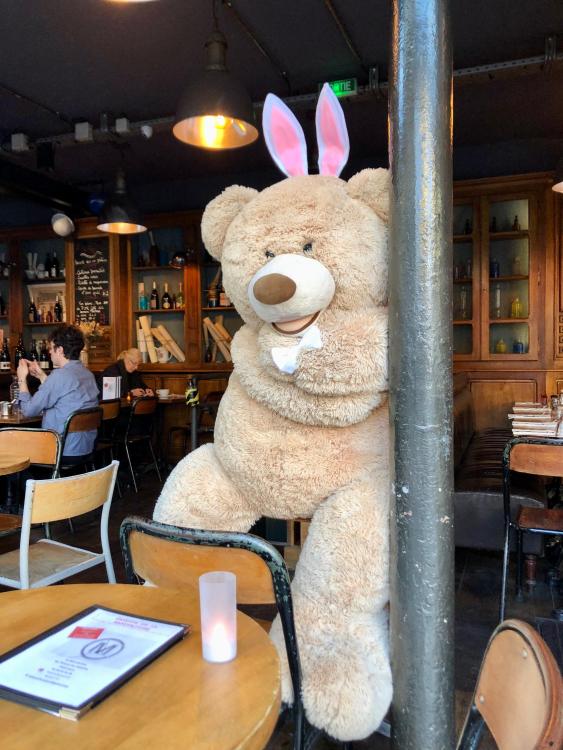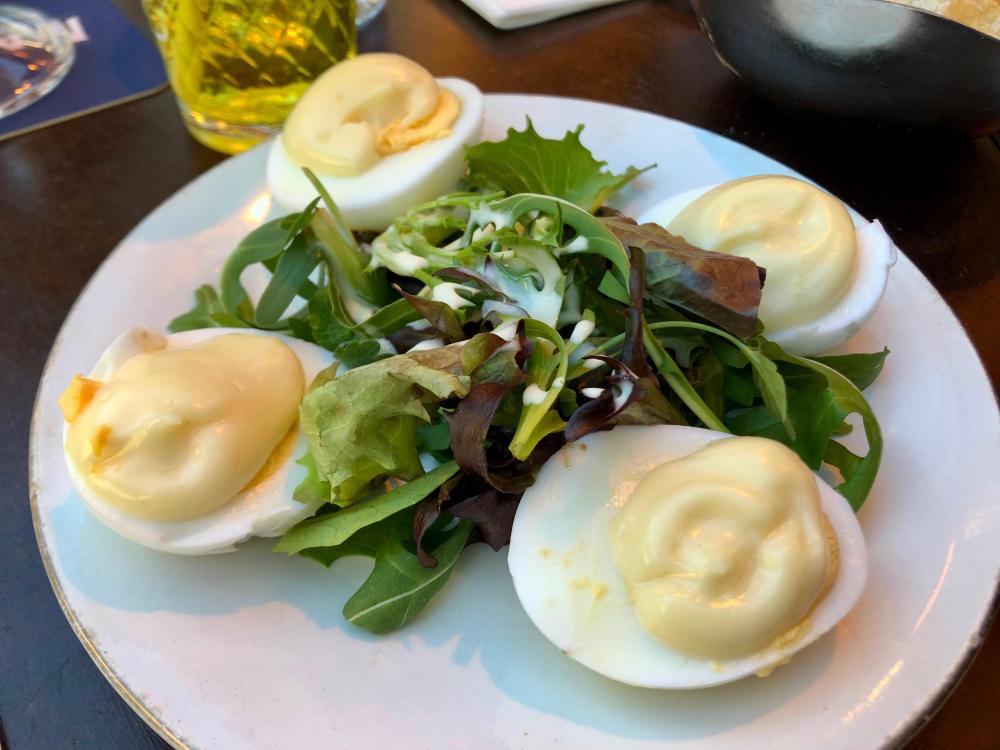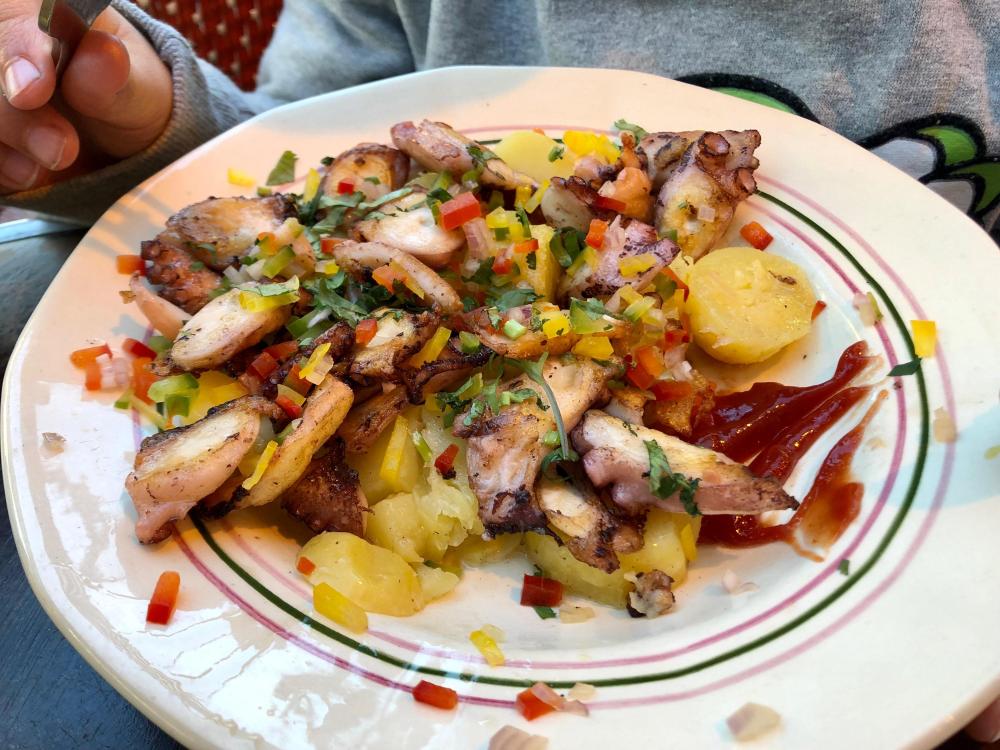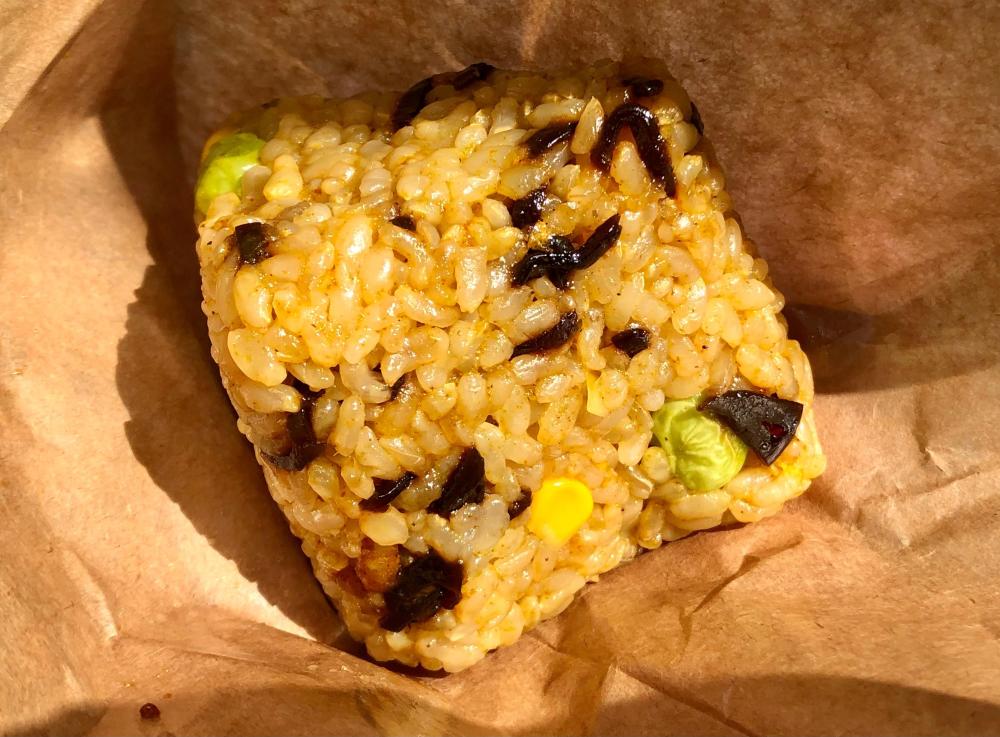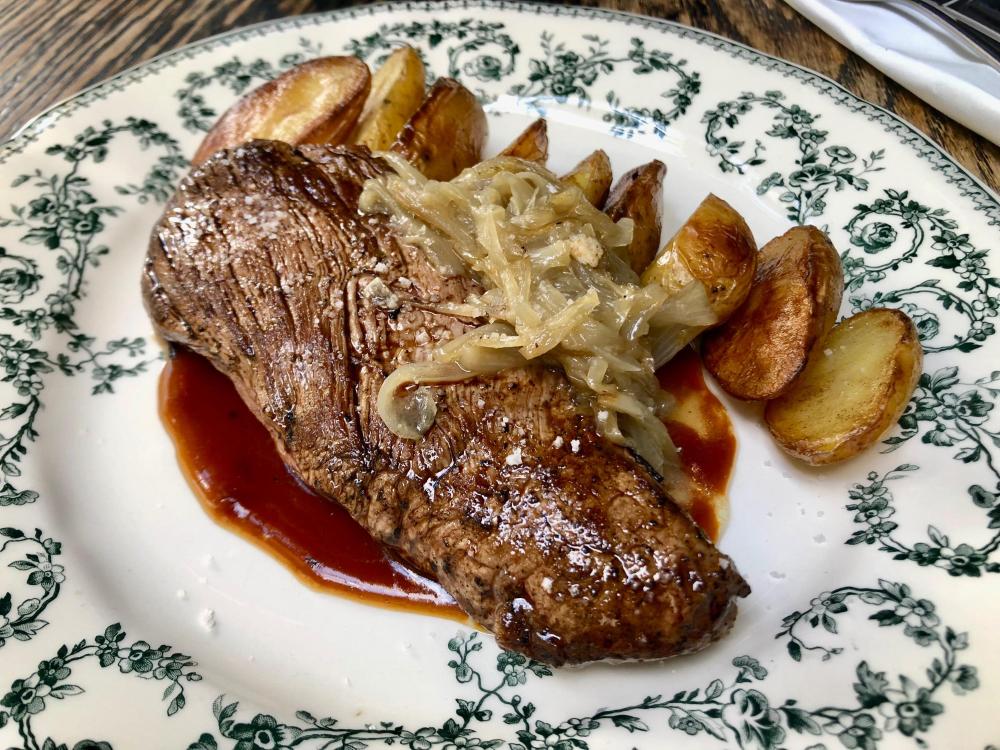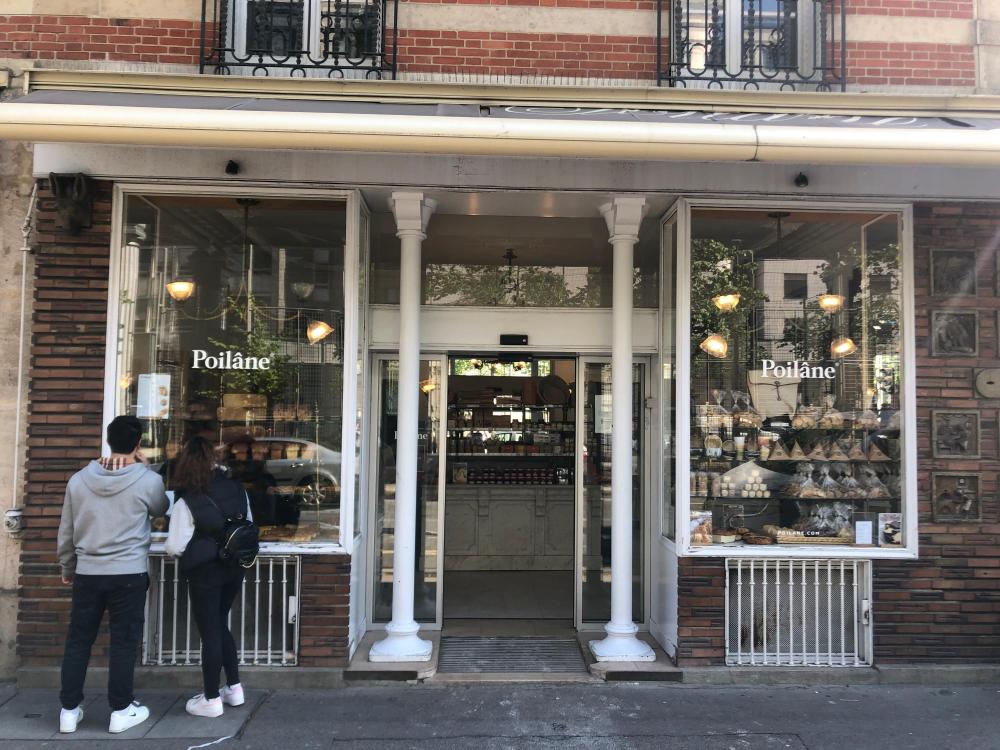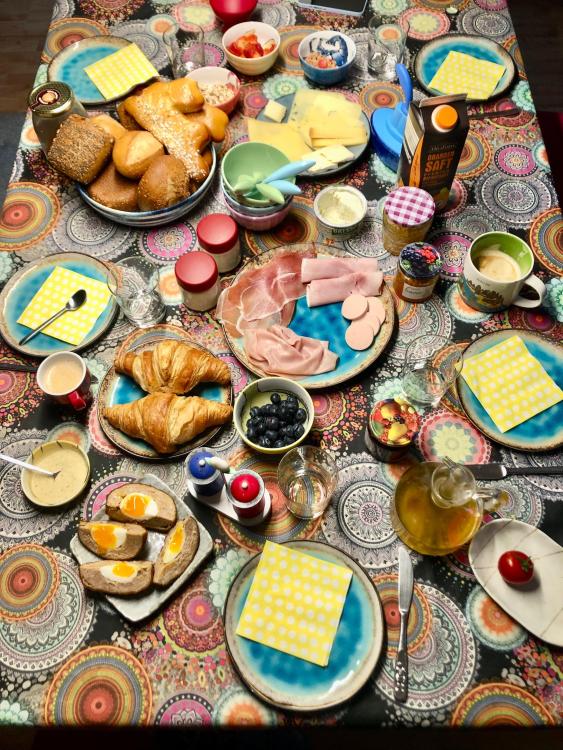-
Posts
4,411 -
Joined
-
Last visited
Content Type
Profiles
Forums
Store
Help Articles
Everything posted by Duvel
-
You can start with: 250 g flour 3 eggs, beaten with 50 mL water and 5 g salt You want to use a slightly coarser flour, if available. If not, bread flour will do. Just mix the flour well into the liquids and let rest for a few minutes*. You want to have a coherent dough, that slowly flows from a wooden spoon when pulled out. A bit thicker than pancake batter. Put the batter into a potato ricer (larger holes preferred) and slowly press into hot salted water just under the boiling point. They‘ll float within 30 sec or so and are done in a minute. Regardless how they look, they will taste great … Shock in cold water, drain and sauté in butter as a side for braised meats. Or mix with an aromatic cheese and some fried onions for Käsespätzle. —- * anything from 10 min to 1 h is fine. Coarser flour requires a bit more time to hydrate.
-
I am presented with the challenge to motivate the rest of the family to head out again after we’ve reached the hotel after a long day of exploring Paris. Today I managed to lure them 800 m away from the hotel to reach La Manufacture, a cozy neighborhood brasserie … There was some odd Teddy bear theme going on - in the whole street actually … A Suze-Tonic for starters … interesting. Bacalhau croquettes … Deviled eggs (my wife complained how I would eat that in a restaurant, but I really felt like it) … Little one wanted octopus (of course) … And beef tartare for us … We were not alone. The fashion avant-garde had dinner at the next table … Quite full we headed home … Dessert were two Macarons in the hotel 🤗
-
They run the cafe & a catering service employing disabled people, both in the kitchen and in front of the house.
-
Lunch at Cafe Joyeux … good food with an agenda. Salmon & leek tart. This was fantastic ! Croque-monsieur … Rice & spinach salad with feta and red beets. Fresh cheese with raspberry coulus and granola. And an extra dessert from Ladurée: little one’s favorite sweets are Macarons* and I promised him the best there are. He agreed 🤗 —- * no, he isn’t spoiled - he just has good taste 😋
- 869 replies
-
- 15
-

-

-

-

-
I love the way the rice noodles peek out shyly between all those fresh and magnificent herbs* 🤗 —- * not to mention those shrimps !!!
-
It is basically an Onigiri, a filled riceball, maybe wrapped in a sheet of Nori.
-
Isn’t it a happy coincidence when your family’s food preferences coincide with the current food trends in Paris ? After half a day in the Louvre (Assyrian and Egyptian artifacts for me, the Spanish & French masters for my wife and the Mona Lisa for the little one) we headed straight up to Omusubi Gonbei for some … well …musubi: Spicy tuna & pickled daikon/shiso in a bento set with karaage, tamagoyaki and edamame. Excellent. Even better: their Japanese curry musubi. I need to make this at home … Less exciting: the recommended soft drink. Why I didn’t take the iced Genmaicha is seriously beyond me … Enjoyed murals and street paintings as we strolled back …
-
Lunch set at L’Escargot de Montorgueil (during my walkabout for the Dinner thread): Snail, gratinated with Brie. They were plump and tender, and the Brie provided ample fat to make them succulent. Bavette with duck fat-roasted (as in very slow roasted) potatoes. Meat was very nice, but the potatoes were so soft and sweet, with that lovely duck fat flavour. Could have had seconds … 🤗
- 869 replies
-
- 15
-

-

-

-
Sure 🤗 … I will write up the tasting notes of the Nicolas items in the Pâtés & Terrines Cook-Off.
-
Nope, just in the 13th, pretty close to the business end of Rue Mouffetard. I really had to walk the whole city to collect everything 😉
-
Absolutely nothing - for regular beer. But the carbonation of Duvel beer is so strong that drinking straight from the bottle is not so pleasant …
-
Easter holidays aka a long weekend in Paris. Today a long needed break from everything: while the little one and my wife headed out for Disneyland, I decided to take a walk and pick up my dinner, themed after our current Pâtés & Terrines Cook-Off … Soooo … Some fresh goat cheese (plus quatre épice and a Duvel Triple Hop*) from La Grande Epicerie de Paris … A quarter miche from Poilâne … A Terrine de Grand Mére and a quail, foie gras & dried fruit pâté from Arnaud Nicolas … Pickles from Maille … And another local beer* from next doors supermarket … Enjoyed on our little balcony. Well deserved too … walked 23 km to assemble that dinner 😉 —- * Yes, you’ve noticed the McDonalds paper cup. It’s a story for another day, but let me assure you that a) it was pristine and b) I wasn’t in the mood to go down and pick up a proper glass. Choices …
-

What Type of Flour is "De Farine" in French Patisserie books?
Duvel replied to a topic in Pastry & Baking
It is at least the most common. T55 is already considered entering the bread flours (think baguette). There will be instances where pâtisserie items use T55, but as you rightfully said you might be able to indentify those by the desired structure of your product. Also, sweet items that fall under the viennoiserie category employ frequently stronger flours (though technically viennoiserie technically falls under boulangerie, so might not be part of your books). -

What Type of Flour is "De Farine" in French Patisserie books?
Duvel replied to a topic in Pastry & Baking
The “arcticle” seems to be more of a promotional piece. It also confuses the milling/processing grade (typology based on ash content or how much of the mineral rich outer bran has been removed) with the fineness of the milling/sieving. French flours for pâtisserie are soft and fine milled, so a lower ash content (T45) and a fine milling (00) coincide, but are independent. Think atta flour … -

What Type of Flour is "De Farine" in French Patisserie books?
Duvel replied to a topic in Pastry & Baking
You can use whatever works for you at a proper T45 substitute: you want a soft, very fine milled (think 00-000) and low protein flour. I assume for most of the recipes, bleached and non-enriched will work best. Not in France, though … -
How could he ? I would enjoy your bread & ham with those beans for weeks …
-
Looking good, @gfweb … Would you let us admire the money shot (a cross section of your terrine) and maybe share a link to the BBC recipe ..?
-
- 913 replies
-
- 13
-

-

-
Heading out tomorrow night for a spontaneous, yet very much needed short break over the Easter weekend - „cleaning out the fridge sandwiches“: Tomato mozz & Jägertoast (ham, fried champignons & cheese) …
-
You can also check the original ingredients (that are pretty basic), use a standard ratio and take it from there … INGREDIENTS: ENRICHED BLEACHED FLOUR (BLEACHED WHEAT FLOUR, NIACINAMIDE, REDUCED IRON, THIAMIN MONONITRATE, RIBOFLAVIN, FOLIC ACID), SUGAR, LEAVENING (BAKING SODA, SODIUM ALUMINUM PHOSPHATE, MONOCALCIUM PHOSPHATE), SALT, CALCIUM CARBONATE. I‘d start with 200 g flour, 1 Tbsp sugar, tsp baking soda plus a pinch of salt. Process as the original mix.
-
Would you mind sharing your recipe / pictures ?
-
At least over here, the Bauer/Bauern prefix typically denotes a rustic preparation: coarse, mostly with all parts of the pig (beef is not often used here), robust spices (think majoram, caraway, allspice, ...). Country-style or de campagne will head in the same direction.
-
2h might be a stretch - but remember: you are #1 to be welcome here to move in 🤗
-
Part II of my sister’s visit: the Schnitzel evening. She specifically requested with Bratkartoffeln & mushroom cream sauce, so that’s what we had (plus Kochkäse and lingonberry jam for me). Little one breaded again enthusiastically … Mine ! Bratkartoffeln were very good. I upped the caraway & garlic powder. Since the oil was hot and there was some Mett left over from breakfast … Scotch eggs 🥳 ! The rest of my family did not share my enthusiasm for these - I on the other hand loved them ! Some Manhattan as a digestif … Asking for some bar snacks. I‘ll sleep well tonight …






